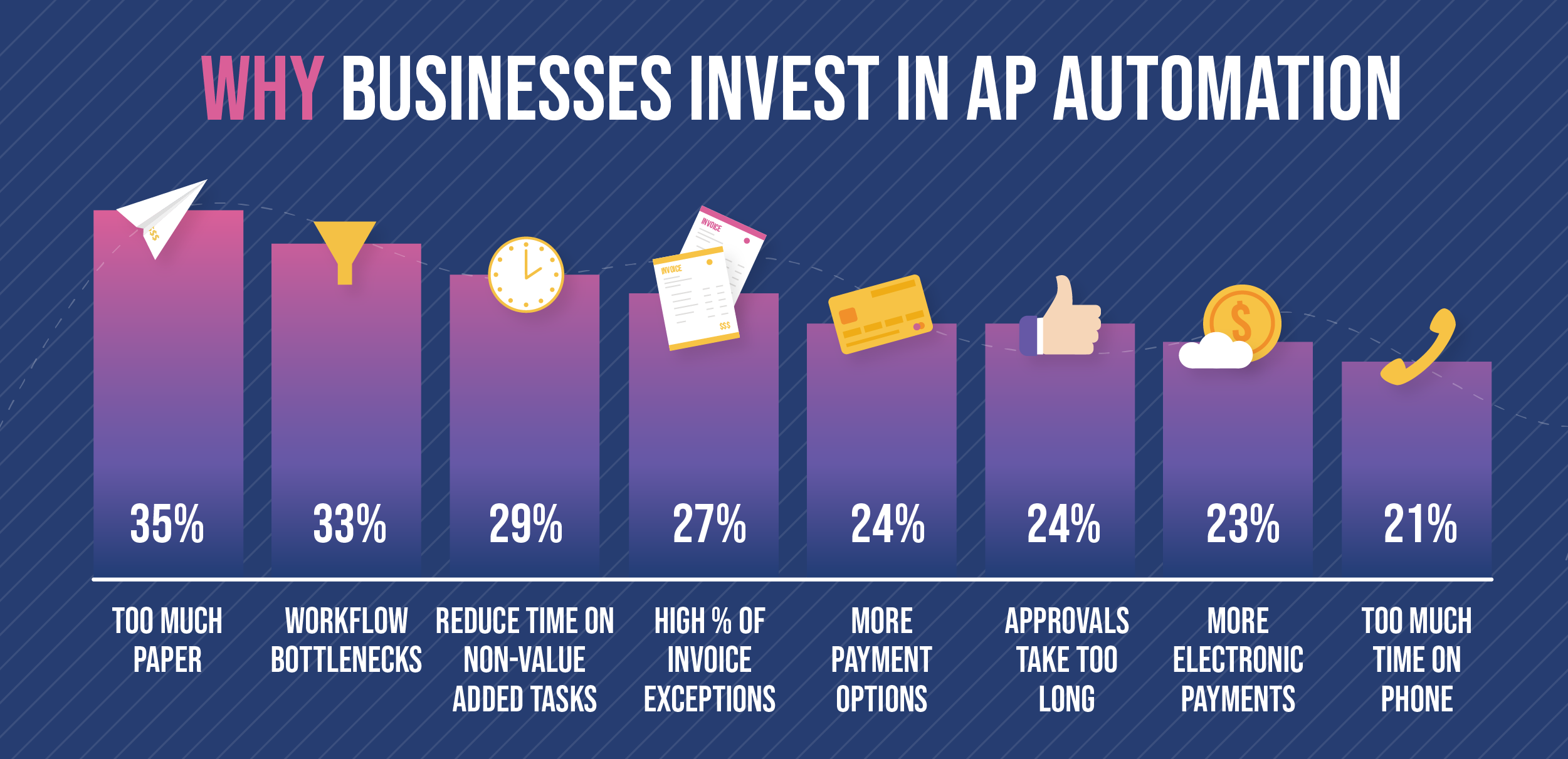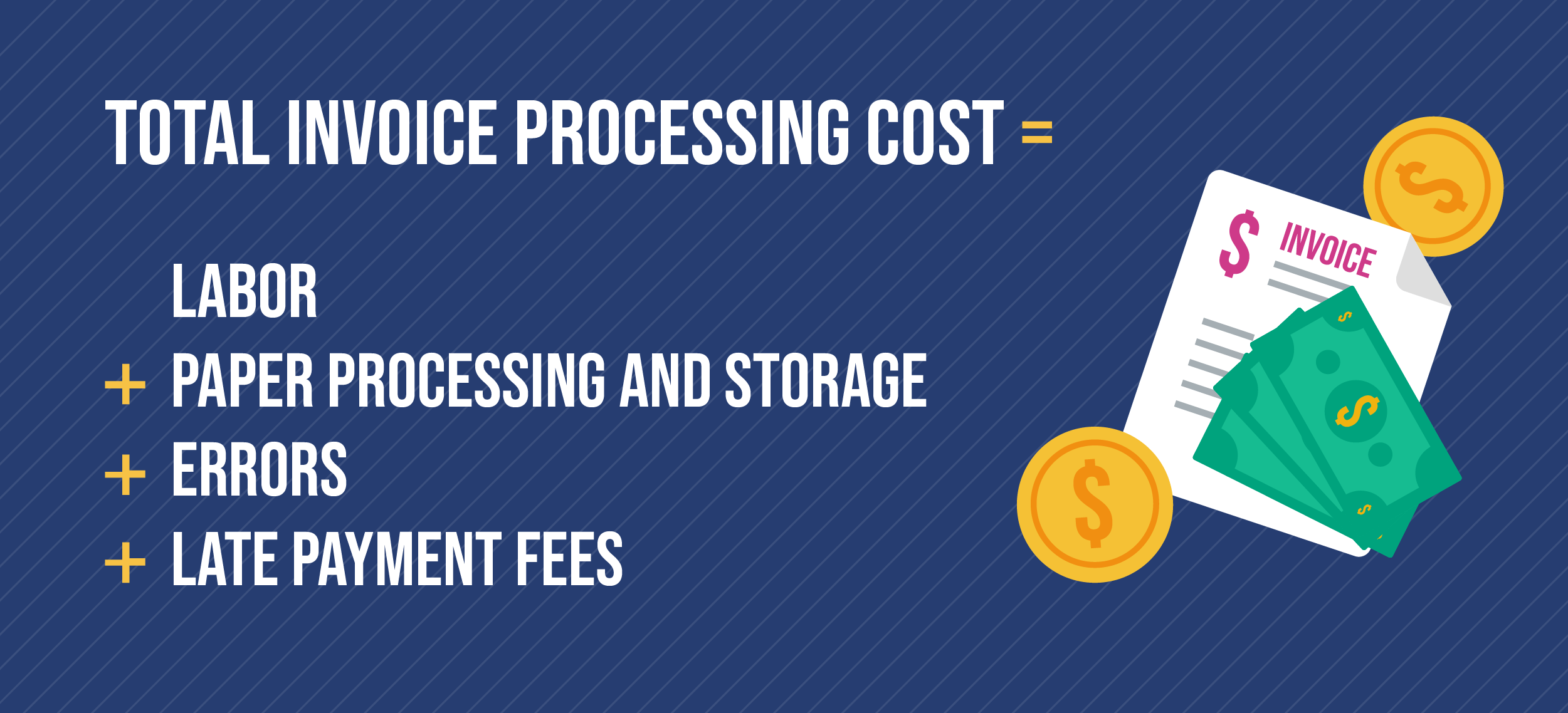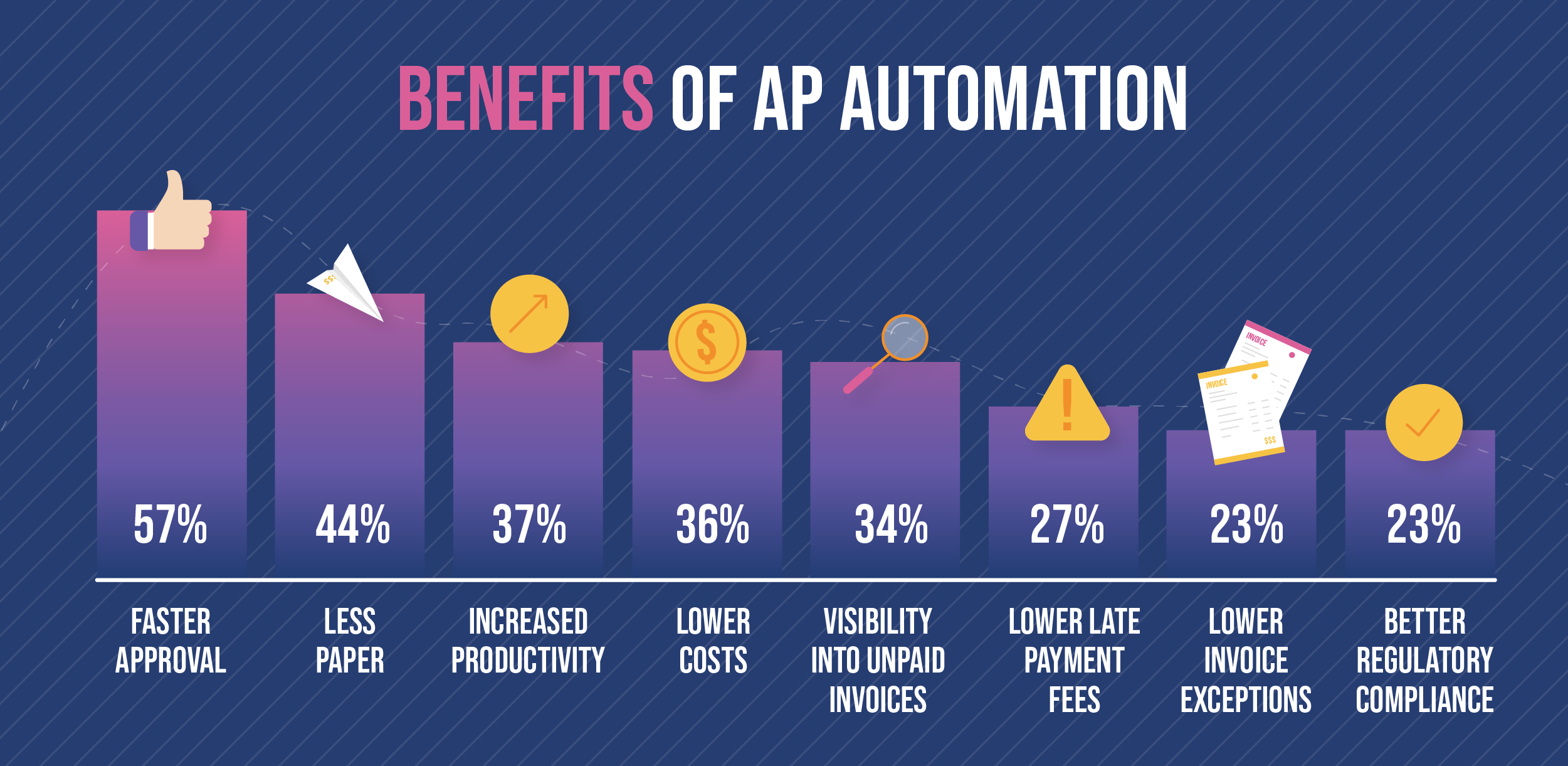The ROI of AP Automation: Accounting for a Smart Investment

AP automation software is a good investment. It promises to save time and money and turn accounts payable into a strategic driver for business by streamlining manual processes and providing transparency and visibility of invoice data. The challenge for CFOs is turning the promise into an actual business plan for automation – which means understanding the true return on investment (ROI) of AP automation for their business.
This guide provides a simple and powerful model you can use to estimate the underlying costs and benefits of AP automation so you can make an informed investment decision.
The Costs and Benefits of Accounts Payable Automation
The primary benefits of AP automation are that it automates and streamlines time-consuming manual AP tasks like processing invoices, invoice capture, invoice validation, approvals, and payment processing. Automating accounts payable reduces processing time and adds transparency and control to the procure-to-pay (P2P) process.

Calculating or estimating the costs and benefits of AP automation involves assessing the direct and indirect ways that automation affects your business. For example, one of the primary benefits of automation is that it reduces labor costs. However, your business can also realize an additional indirect benefit when you re-assign those employees to work on more valuable, strategic tasks.
The direct benefits can be measured or estimated using a cost model. Assessing the indirect benefits requires more strategic thinking. The metrics for these benefits are often easier to measure after the AP automation solution is in place.
We’ll start by looking at the direct impact of AP automation software.
Direct Benefits of AP Automation
The direct benefits of AP automation are immediate reductions in invoice processing costs. For most businesses, these costs look like this:
Direct Invoice Processing Costs = labor + paper processing and storage + errors + late payment fees

Let’s break down these components:
Labor
AP automation can substantially reduce invoice processing costs, and manual invoice processing is highly labor-intensive. It’s also inefficient – according to a benchmarking study by the American Productivity and Quality Center on invoice processing, companies that rely on manual workflows only process 6,082 invoices per FTE/year, just under half the average for all companies. The same study provides clear evidence of the core benefit of invoice automation – companies that automate and optimize their AP processes average 23,333 invoices per FTE year.
You can use an accounts payable labor costing model to estimate the cost savings and benefits from AP automation.
Human Error and Duplicate Invoices
According to the APQC, companies that use manual invoice processes experience a 2% invoice error rate per year. While this may seem like a small percentage, the costs add up fast. For example, assuming it takes at least an hour for an AP employee to correct an erroneous invoice, the impact on a company that processes 10,000 invoices per year would be 200 hours, almost 10% of a full-time employee’s time.
The APQC reports that AP automation significantly reduces the invoice error rate from 2% to 0.8%. To use our example, AP automation would reduce the time spent fixing errors from 200 to 80 hours per year.
Automation also reduces the number of duplicate invoices by automatically detecting and flagging duplicates. The costs of duplicate invoices are more challenging to estimate, but one study by SAP suggests that 1.29% of invoices are duplicates, with an average cost of $2,034 per invoice.
Paper Processing
Manual, paper-based AP processes affect your AP costs in two ways. 1) paper-based processes are slow, which reduces the volume of invoices and purchase orders employees can process, and 2) paper needs to be stored, often taking up expensive office space. To estimate your paper costs, count the number of filing cabinets in your AP department, multiply by 6 square feet, then multiply that number by your rent per square foot.
Late Payment Fees and Access Discounts
According to PYMNTS.com, 40% of businesses report that late invoices are their biggest payments headache. Late payments can result in late fees, withheld shipments, or reduced discounts from suppliers, creating unnecessary stress with vendors. One of the primary causes of payments being late is slow invoice processing. For example, in Stampli’s 2021 survey, AP Today: Bottlenecks, Benchmarks, and Best Practices, AP leaders reported that almost one-third (32%) of invoices took six days or longer to process, and 10% of invoices stayed in the processing queue over 21 days.
Estimating the cost of late payments to your business is relatively easy – just review past invoices and tally up the late payment fees. As for the potential savings from automation? The impact on your business will depend on other factors, such as payment methods, but a reduction in processing times by over half will make it much easier to pay invoices on time.
Indirect ROI
AP automation can also have indirect benefits for your business resulting from cost reductions, risk mitigation, improved cash flow, and reduced or eliminated barriers to growth. These metrics aren’t as easy to measure as the direct benefits, but you can estimate them from market data.
Reduced Fraud
Fraud is one of the most significant risks in accounts payable. According to the Association of Certified Fraud Examiners, businesses worldwide lose 5% of their annual revenue to fraud, at an average loss of $1.78 million per case. AP automation closes the loopholes left by manual data entry, enforces internal controls, detects and flags errors and duplicate invoices, and provides real-time transparency to AP workflows. Only you know how much your business might lose to fraud each year, so calculating the ROI of fraud reduction may involve speaking to AP automation providers to understand how their solutions prevent fraud. The savings in time and money, not to mention headaches, could be significant.
Better Internal Controls
Enforcing internal controls like separation of duties helps to prevent errors and fraud, improve financial oversight, and maintain a complete AP audit trail. Unfortunately, it can be difficult to maintain adequate internal controls if you are still using manual AP processes. AP automation improves the efficiency and effectiveness of internal controls by automating essential functions such as:
- Using OCR to scan and digitize invoices
- Managing the approval process
- Detecting and flagging errors
- Archiving data
- Enforcing separation of duties through account restrictions and permissions
In addition, AP platforms track and store data and communications in a centralized location, making it easier to perform internal audits.
To estimate the indirect ROI of improved internal controls, look at the impact of risk mitigation. For example, what are the penalties and costs in your industry for failing to comply with tax and reporting regulations? An AP audit may also reveal potential cost savings and opportunities to reduce risk.
Improved Vendor Relations
Implementing AP automation is an excellent way to improve supplier relationships. Apart from the direct benefit of reduced late payments, automation has some key indirect benefits. For example, as your payment cycle improves, vendors may offer discounts for early payment. Another benefit is improved communications – many platforms offer a vendor portal where vendors can communicate with AP teams, check the status of invoices, and send and manage documents. Stampli’s Advanced Vendor Management solution goes beyond the vendor portal to add seamless vendor onboarding, document control, and other features.
Look to procurement and risk mitigation to estimate the indirect benefit of improved vendor relationship management. On the procurement side, vendors may be willing to propose early payment discounts that you can use to calculate your cost savings (and positive cash flow). On the risk mitigation side, better communication and vendor documentation reduces the chance of something going wrong such as a missing insurance policy.
Scale AP to Support Business Growth
Manual AP processes don’t easily scale to handle larger volumes of paper invoices. As your business grows and expenses grow, your AP department may get overwhelmed by paper. Automation platforms are easily scalable to support business growth without added complexity.
One way to estimate how well your AP processes can scale is to estimate your current AP processing capacity. You can do this by looking at the number of invoices per FTE your business processes and the average time an invoice is in the system. If the AP department is already experiencing slow processing times, any increase in invoice volume may cause further delays. In this case study, read how Stampli helped online mattress pioneer Purple handle rapid growth by reducing invoice processing times by 63%.
Real-World ROI From AP Automation
In 2021, Stampli surveyed over 400 finance and treasury leaders across multiple industries on why they invested in AP automation and the specific benefits they’ve seen. Businesses reported positive direct and indirect benefits in almost every aspect of their AP processes.

In this webinar, Ernie Humphreys, CEO and COO of Treasury Webinars, analyzes the survey results and what they mean for your business.
Stampli: The Logical Choice for AP Automation
Stampli is the leading AP automation solution and the best way for your business to maximize the ROI of accounts payable automation. Recognized by G2 as #1 in Delivering Results, Customer Relationships, Implementation, and Usability, Stampli is powerful, simple to implement, and seamlessly integrates with major ERPs and accounting systems.
With no-code implementation in weeks, not months, and minimal disruption of your existing processes, Stampli lets you see the impact of AP automation on your bottom line almost immediately.
Take the first step today. Contact Stampli to set up a free demo.
